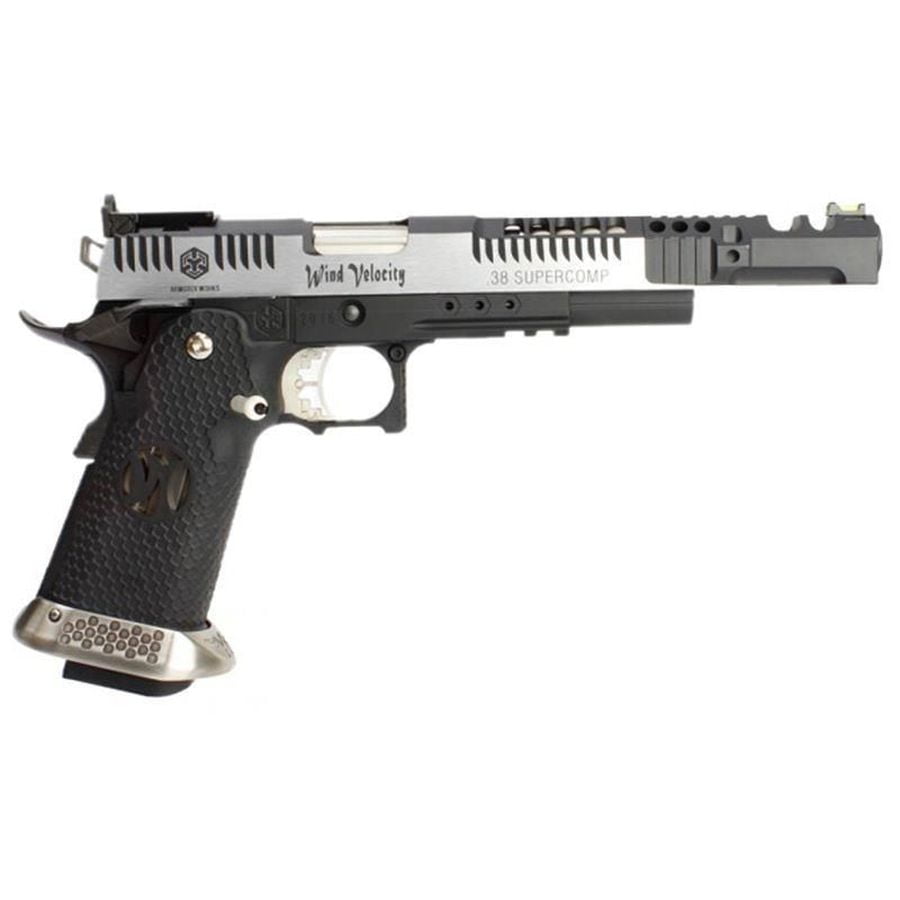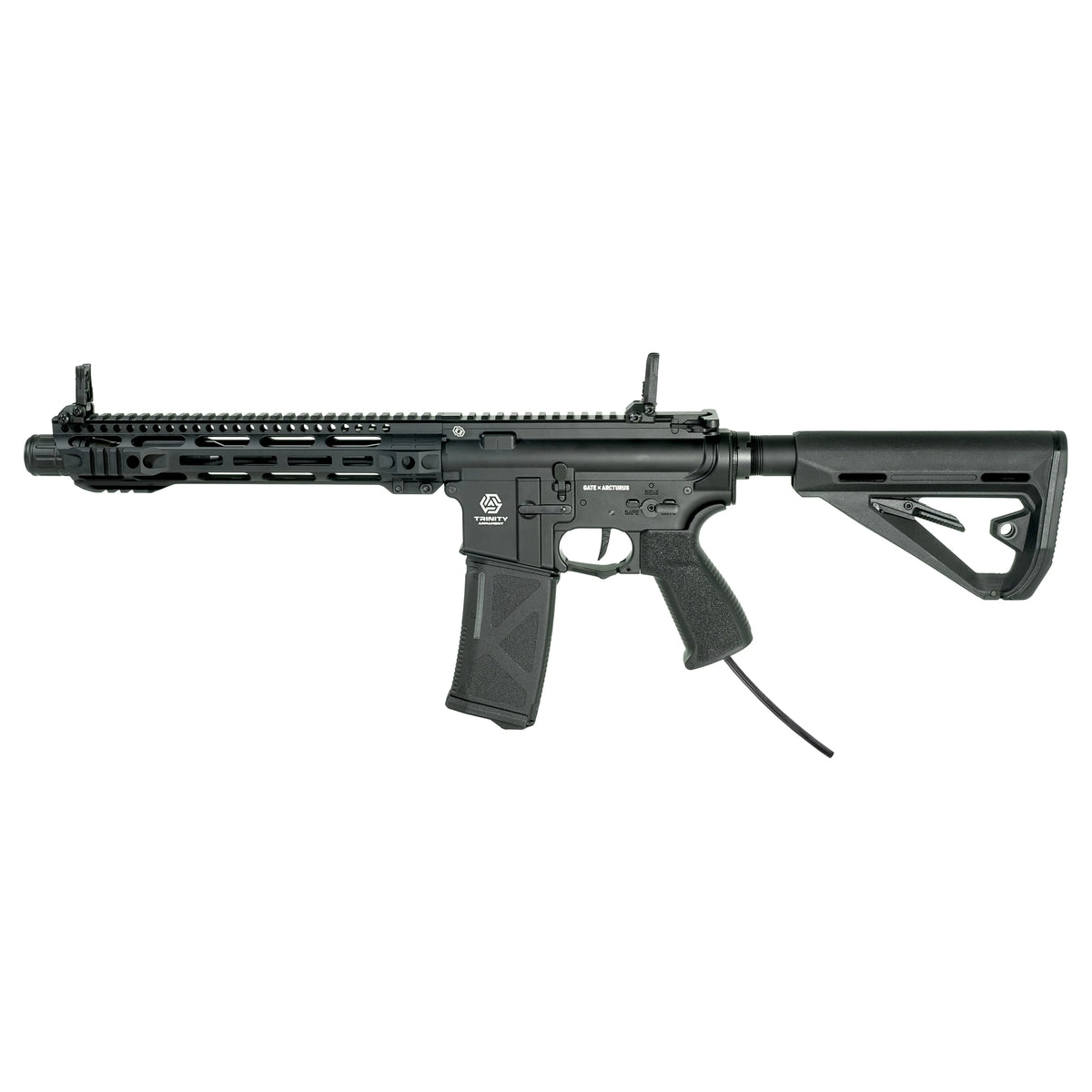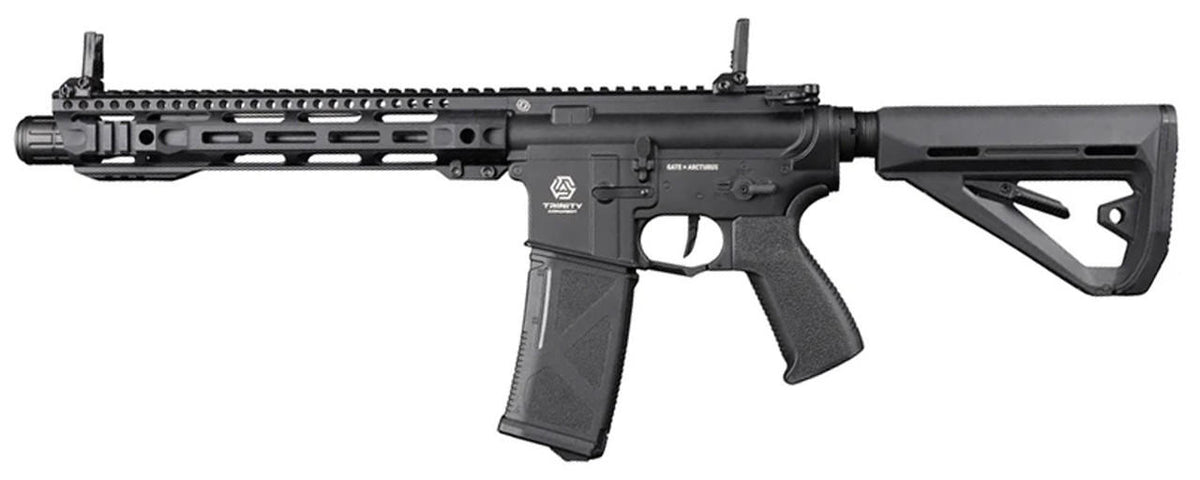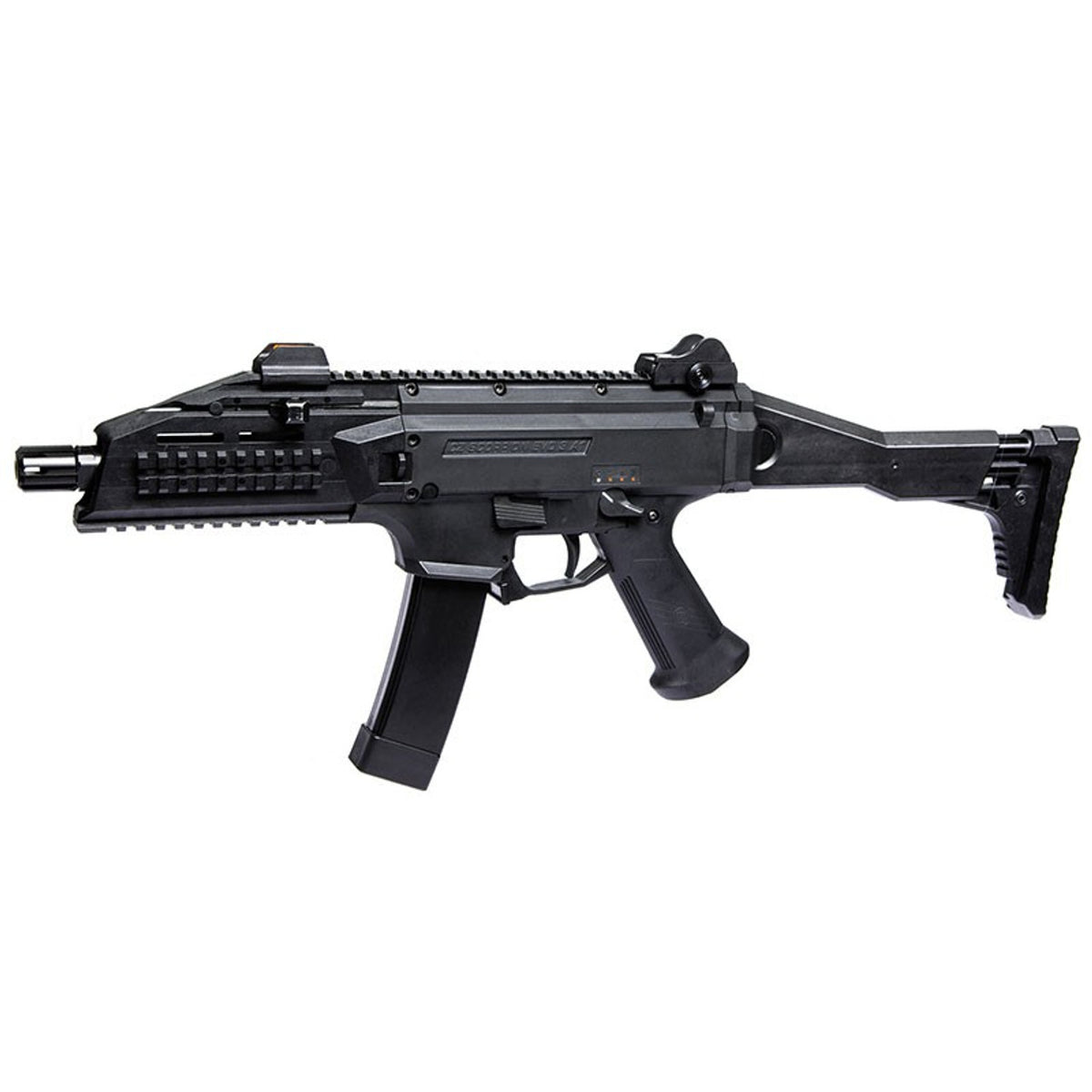Introduction
MCX GBB Spec Sheet: FPS, hop-up, and gas explained in French. This article offers a comprehensive exploration of the MCX GBB airsoft replica, drawing on field observations, benchmarks, and practical buying guides. You'll find a clear overview of specs, interchangeable parts, costs, and choices between GBB and AEG, all with a user experience and EEAT-oriented approach.
MCX GBB airsoft replica specs: accuracy and reliability improved by interchangeable parts
The MCX GBB airsoft replica specs, FPS, hop-up and gas system are explained with concrete examples to show their direct impact on accuracy.
To understand the effectiveness of an MCX GBB, we must focus on the specs that directly influence accuracy and feel in the hand. The gas system, hop-up, and the choice of interchangeable parts play a key role: they modulate recoil, velocity, and thermal stability during extended sessions. In test ranges, players note that parts like the nozzle, barrel, and well-maintained seals reduce shot variations and improve consistency from one magazine to another. FPS and hop-up are not isolated parameters: their coordination with the gas system determines trajectory and accuracy over 15 to 25 meters, which is crucial for CQB scenarios or medium-range fields. The choice of gas—standard propellant gas or specific solutions depending on the model—also impacts print yield and shot consistency in various conditions (temperature, altitude, humidity). Beyond the numbers, the shooting experience offers better intuition: we notice that fine adjustments on the hop-up allow for quick alignment of shots and better dispersion compared to less modular configurations. For novices as well as advanced players, these specs become concrete levers for improvement when adjusting the settings to the game context and the terrain.
- FPS varies depending on gas used and internal parts, typically within a usable range for short scenarios and local competitions.
- Adjustable hop-up with sufficient granularity to compensate for the effects of wind and trajectory roughness.
- Blowback gas system that influences feel, feedback and coordination with the charger.
- Materials and assembly promoting thermal stability and durability in sustained use.
- Parts compatibility and upgrade possibilities for repeated sessions without degradation of precision.
The MCX replica gas FPS hop-up datasheet, well presented, summarizes these elements and serves as a compass for comparing variants and possible upgrades. In practice, understanding these elements allows players to anticipate costs, evaluate the compatibility of parts, and adjust their setup according to the type of game and the equipment available. The important thing is to link your choice of parts to your shooting objectives and your local configuration, rather than aiming for a single isolated piece of data.
Benchmarks and concrete comparisons put into perspective the performance of the MCX GBB against the MCX AEG and other replicas thanks to independent tests.
FR benchmarks and independent panels show that, under controlled conditions, the MCX GBB offers a distinct feel and responsiveness that differs from AEG replicas. Shot consistency and average accuracy can vary depending on settings, gas quality, and general maintenance. These tests also highlight that interchangeable parts—including firing guides and blowback mechanism components—play a major role in shot stability from session to session. Compared to MCX AEGs, the GBB often presents a more realistic feel and shooting dynamics that better respond to scenarios requiring pinpoint accuracy and fine-tuning distances. Operational costs, including magazines and gas, remain a crucial factor to monitor, especially for clubs looking to maintain budgets over a full season. Overall, independent tests recommend evaluating the total cost (gas + mags) and verifying compatible parts at the time of purchase to avoid surprises after the fact.
- Accuracy-wise, the GBB can offer comparable dispersion to some well-tuned AEGs, but is more dependent on maintenance and gas consistency.
- In reliability and maintenance, results vary depending on usage; regular maintenance and the choice of a suitable gas improve the longevity of critical components.
- The total 12-month cost includes magazines and gas; for some clubs, GBB can remain competitive if access to parts and gas is easy and economical.
- The comparisons highlight the importance of a reproducible test protocol to assess field performance under real-world conditions.
Maintaining performance requires a proactive approach: following manufacturer guidelines, checking part compatibility with previous generations, and scheduling pre-season maintenance sessions. For players who want to go further, interactive content channels and carousels dedicated to parts and tuning provide hands-on demonstrations on assembly and maintenance, as demonstrated by the formats gaining traction in MCX GBB content.
Quick Buying Guide to assess cost, parts compatibility, and magazine and gas availability to optimize your MCX GBB choice.
To optimize your MCX GBB choice, you need to quickly assess three areas: total cost, parts compatibility, and magazine and gas availability. Total cost includes the initial purchase price, additional magazines, and gas consumed over a season. Parts compatibility varies by version and generation; checking official lists and club returns can prevent costly incompatibilities. Finally, magazine and gas availability directly impacts accessibility and continuity of play on the field. Quick Buyer's Guides offer checklists and direct comparisons between similar models to help players make an informed decision without incurring the initial investment.
- Check official parts compatibility lists before purchasing.
- Estimate the cost of mags and gas over 12 months based on play style and pace.
- Consider GBB or AEG alternatives depending on playing environment and playing preferences.
- Use buying guides and checklists to structure the decision.
For players who prefer a hands-on approach, carousels and interactive guides that showcase parts and their interchangeability offer a quick and useful overview. Meanwhile, short video series that explain assembly or maintenance promote visual learning and can speed up decision-making.
SIG MCX Gas Blowback Replica Reviews and Feedback: Reliability and Field Performance
SIG MCX GBB Consumer Reviews and Tests: Summary of feedback on accuracy, consistency of fire, and gas efficiency.
User feedback highlights a realistic shooting sensation and satisfactory consistency under optimal conditions. Opinions converge on the importance of regular maintenance and the choice of appropriate gas to maintain consistent performance over multiple sessions. Some players note variations in performance when climatic conditions change (temperature, humidity), which reinforces the idea that the replica's potential depends heavily on the care taken with the seals and the sealing system. However, the general consensus is that, well maintained, the SIG MCX GBB offers reliability suitable for repeated games and reasonable accuracy at medium ranges. Community feedback also shows that upgrade parts and interchangeable parts, when properly checked and installed, extend longevity and stabilize performance over multiple sessions.
- Completeness of feedback: Most users cite the precision and feel of the blowback as major assets.
- Reliability and gas: Efficiency depends heavily on maintenance and the gas used; refusals or leaks generally indicate a seal or pressure problem.
- Cost and accessibility: Some items cost more depending on the region, but parts are generally still available through specialist distributors.
- Preventive maintenance: Simple maintenance routines (bore cleaning, seal checking) help maintain long-term performance.
Real-world benchmarks and comparisons: What independent tests say about reliability and cost-effectiveness compared to competitors.
Independent benchmarks compare the SIG MCX GBB to other GBB replicas and AEGs for key metrics: average on-target accuracy, shot stability across multiple magazines, and running cost (gas and mags). Overall, tests report that the MCX GBB offers a more realistic shooting experience, but its consistency can be affected by factors like temperature and maintenance. In contrast, AEGs tend to offer higher consistency over longer sessions and require less reliance on gas type, which may appeal to clubs that prioritize consistency at a stable cost. For buyers comparing directly, it is worth examining annual costs (gas + mags) and component availability, as these elements strongly influence playing experience and budget.
Maintenance and practical tips to maximize longevity and performance stability over multiple sessions.
To get the most out of your SIG MCX GBB, implement a simple, regular maintenance routine: clean the barrel and hop-up after each session, check the seals and tightness, test the gas pressure and adjust the spring if necessary, and check the blowback for mobility. Developing a maintenance checklist can prevent unexpected breakdowns and extend the life of key components. In practice, scheduling light maintenance between sessions and a more comprehensive check after 5 to 10 sessions helps avoid performance drops and unexpected costs. Finally, documenting the adjustments made by a club or group of players allows for the sharing of best practices and the improvement of collective performance on the field.
- Regular cleaning and inspection: barrel, hop-up, seals and gas.
- Check gas pressure and flow to avoid fluctuations.
- Track compatible parts and upgrades recommended by manufacturers.
- Deployment of a maintenance schedule and quick troubleshooting guide.
Maintenance and practical tips to maximize longevity and performance stability over multiple sessions.
- Establish a post-session maintenance routine: cleaning the barrel and seals, lightly lubricating moving areas, and checking the magazine for leaks.
- Maintain stocks of compatible gases and magazines and check the expiration dates of propellant gases.
- Document settings and test results to establish a personal benchmark for each terrain type.
- Schedule periodic test sessions to validate performance after upgrades and adjustments.
MCX GBB interchangeable parts: detailed parts and compatibility to avoid pitfalls
MCX GBB Interchangeable Parts: List of interchangeable components and compatibility between versions to guide purchases.
MCX GBB interchangeable parts cover a wide spectrum, from the nozzle and barrel to joints and guides, with variants that may be compatible between certain generations and specific to others. As part of a considered purchase, it is crucial to check official lists and community feedback to avoid investing in an incompatible part that can generate additional costs. The most requested upgrades concern accuracy and the reduction of play between components, which directly influence shot repeatability and blowback stability. In practice, a quick lease consists of prioritizing parts that can be upgraded without the need for expensive adapters or widen parts, in order to limit risks and costs during subsequent upgrades. Finally, observing feedback from experienced clubs and players can greatly help identify parts that truly add value in the long term.
- List of modifiable components: nozzle, barrel, seals, guides, springs and blowback mechanism parts.
- Version compatibility: some parts fit across generations, others require specific parts.
- Check before purchase: consult manufacturer lists and customer feedback; plan for compatible supplements.
- Precise Upgrades: Aim for upgrades that provide significant value in terms of accuracy and stability.
Where to find parts and how to check compatibility before purchasing to avoid costly incompatibilities.
- Look for official distributors and specialist shops that publish clear compatibility lists.
- Compare part numbers and versions (GBB generations) to identify exact matches.
- Read user reviews and installation guides to anticipate assembly challenges.
- Test components when purchasing in a clear context (return policy and warranty).
Common replacement mistakes and pro tips for safe and effective upgrades.
- Do not disassemble or replace components without taking into account spacings and tolerances; this may cause leaks or malfunctions.
- Neglecting hop-up calibration when assembling major parts can negate the gains obtained by the upgrade.
- Ignoring the manufacturer's recommendations on gas type and additives can impact seal durability and gas efficiency.
- Failure to test after every change can amplify performance losses; a rapid testing protocol is crucial.
MCX GBB vs MCX AEG: A clear buying guide on cost, affordability and performance
Operating costs and availability of mags and gases compared to AEG for a 12-month total cost calculation.
Comparing operational costs between MCX GBB and MCX AEG involves evaluating mag prices, gas costs, and typical maintenance frequency over a full season. In GBB, monthly costs can fluctuate depending on gas type and mag availability; clubs will need to estimate the budget by considering magazine rotations and consumables. In AEG, the cost of batteries and chargers can be more predictable but require different maintenance, particularly on the electrical system and power-related parts. Overall, the 12-month calculation should incorporate initial purchase costs, wear parts, and logistics costs for mags and gas. The evaluation often shows that, when parts are more readily available and mag and gas costs remain reasonable, GBB can remain competitive for players seeking a more realistic experience and more tactical handling.
- GBB: Mags and gas vary by model; total cost potentially higher if gas and mags are not readily available.
- AEG: more stable costs over the year; batteries and electrical parts to watch.
- Calculate total cost over 12 months: compare the initial purchase cost + mags + gas/batteries + maintenance.
- Geographic and supply factors: Access to reliable distributors can strongly influence the actual cost.
Performance and reliability based on FR benchmarks, with practical implications for the field and the club.
FR benchmarks indicate that net performance is highly dependent on the usage environment: type of game, distances, and shooting conditions. In practice, this means that clubs and players who prioritize accuracy and shot realism may prefer the GBB when properly maintained and set up, while the AEG may be preferred in environments where stability and ease of maintenance are paramount. Purchase decisions between GBB and AEG should therefore take into account the playing style and social setting of the club. In short, the benchmarking results support a practical and contextualized approach, rather than a simple choice based on isolated numbers.
- Accuracy and Consistency: Both systems can achieve similar levels under ideal conditions, but the GBB requires careful gas and parts management.
- Reliability and Maintenance: The GBB is sensitive to regular maintenance; the AEG can offer greater consistency without intensive maintenance.
- Total cost: The choice often comes down to the annual cost of gas and mags, and access to parts.
- Recommendation: test both solutions within the club and take into account feedback from players on the field.
Use cases and advice according to the style of play: when to favor the GBB and when the AEG according to your needs.
Depending on the style of play (fast CQB, milsim, or long-range shooting), the GBB can provide a more realistic feel and recoil management that contributes to immersion. For players who prioritize precision and tactile experience, the GBB offers notable benefits when maintenance is taken seriously and parts are compatible with versions and upgrades. On the other hand, for clubs looking for a robust solution that is not dependent on conditions, the AEG can offer greater consistency and simpler maintenance. In practice, a clear buying guide recommends establishing a game profile, estimating costs, and testing both systems on similar sessions to make a realistic and lasting choice.
- If you value realism and fire control, favor the GBB with particular attention to maintenance and parts compatibility.
- If you value consistency and easy maintenance, the AEG may be the smart choice.
- Consider the total cost over 12 months and the availability of mags and gas for a sustainable decision.
- Adjust the choice according to the club setting, local rules and playing environment.
FAQ
- What are the main differences between MCX GBB and MCX AEG? The MCX GBB is a gas-operated replica with blowback, offering a realistic feel and dependent on gas and magazines, while the AEG is electric and offers different shooting consistency and maintenance; the choice depends on budget, playstyle, and playing environment.
- Are MCX GBB interchangeable parts compatible between versions? Some parts are compatible between generations, but others require version-specific parts; check official manufacturer lists and community feedback before purchasing.
- Where to find MCX GBB-compatible magazines and gas, and what will they cost? Specific MCX GBB magazines and various propellant gases are available from specialist distributors and online; costs vary depending on the model and capacity; budget for magazines and gas over the season.
- What credible benchmarks and reliable sources can you use to evaluate an MCX GBB? Consult official manufacturer pages, independent tests, and club/player feedback for real, reproducible benchmarks, and cross-reference them with recent buying guides.
Conclusion
By combining an EEAT approach, careful reading of benchmarks and feedback, you get a clear vision for choosing and maintaining your MCX GBB. To go further and access compatible parts and purchasing options, consult the practical guides, checklists and technical demonstrations available from distributors and clubs. To facilitate your decision and access a reliable MCX GBB selection, discover our complete offer and the associated interchangeable parts by visiting this link: https://jn3m49-zz.myshopify.com/products/apfg-mcx-gbb-replique-airsoft






0 comentarios